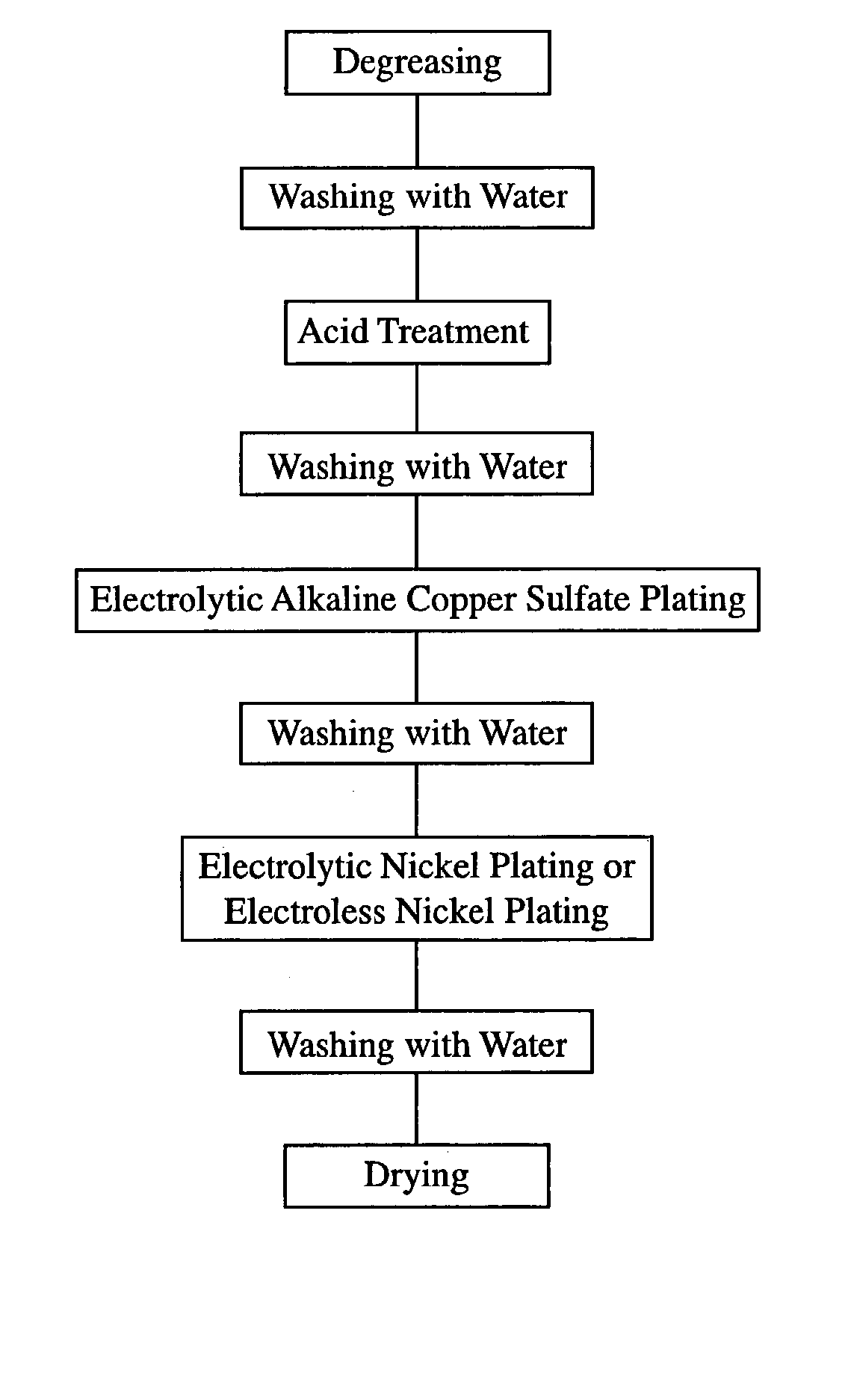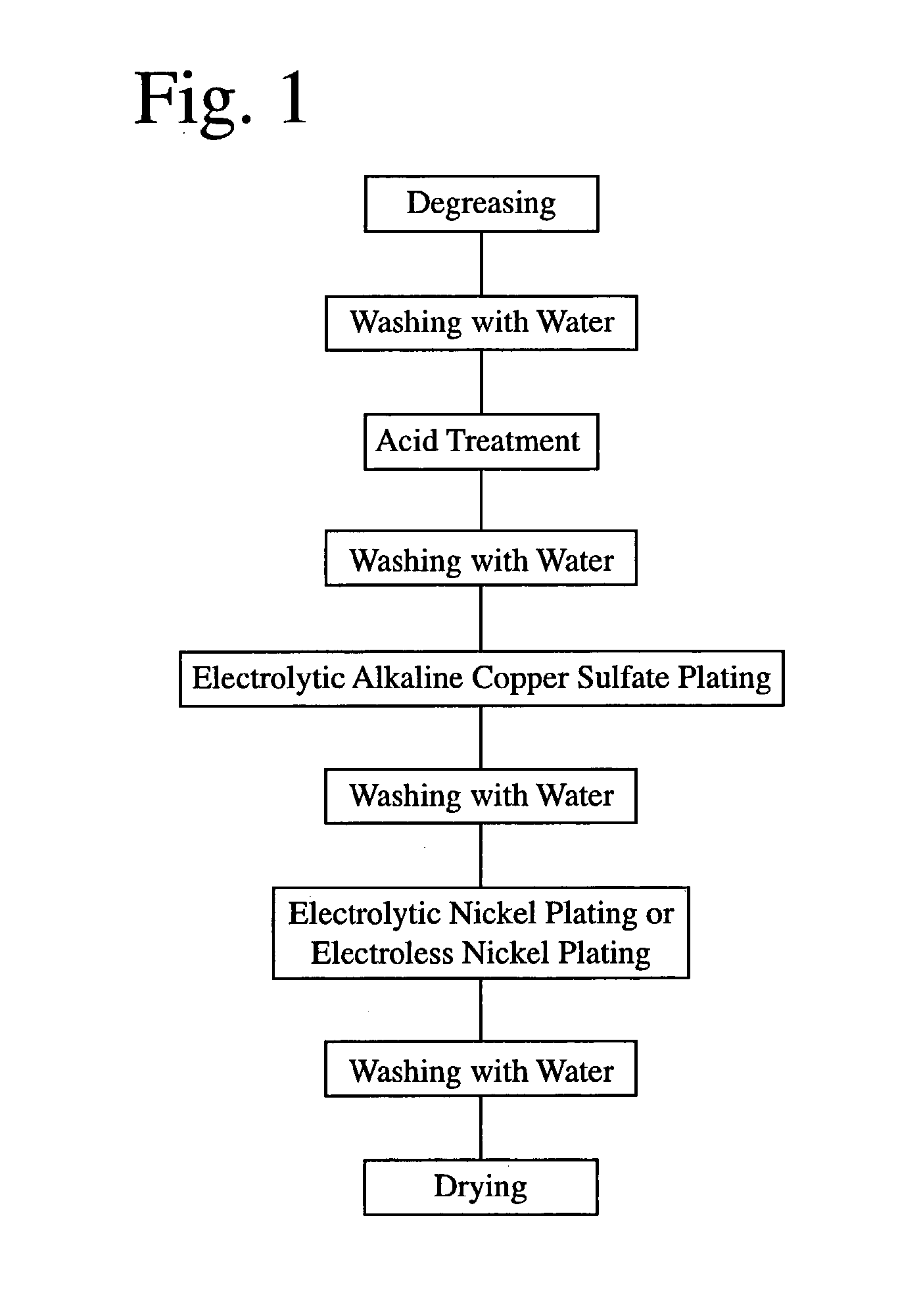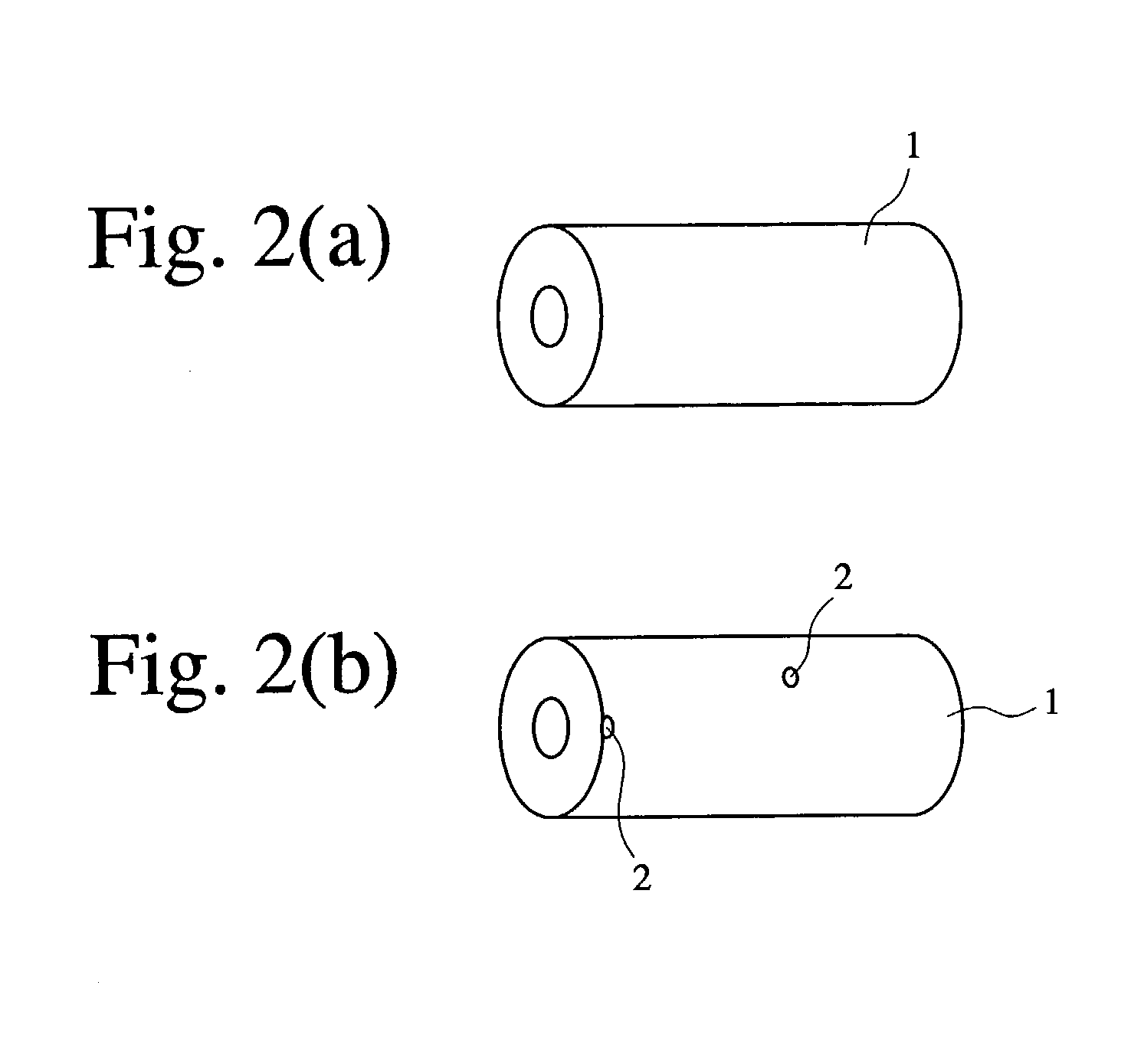Electrolytic copper-plated r-t-b magnet and plating method thereof
- Summary
- Abstract
- Description
- Claims
- Application Information
AI Technical Summary
Benefits of technology
Problems solved by technology
Method used
Image
Examples
example 1
[0068] Each of rectangular plate-shaped R--T--B sintered magnets of 10 mm in length, 70 mm in width and 6 mm in thickness with anisotropy in the thickness direction, which had a main component composition (weight %) comprising 25.0% of Nd, 5.0% of Pr, 1.5% of Dy, 1.0% of B, 0.5% of Co, 0.1% of Ga, 0.1% of Cu and 66.8% of Fe, was provided with an electrolytic copper plating layer and an electrolytic nickel layer by the plating method shown in FIG. 1. The plating processes were as follows.
[0069] First, each R--T--B magnet was degreased by a degreasing agent (trade name: Z-200, available from World Metal Co. Ltd.) at 30.degree. C. for 1 minute, and then washed with water. Next, each R--T--B magnet was immersed in a diluted nitric acid bath at room temperature for 2 minutes to carry out an acid treatment, and then washed with water to clean the surface of each R--T--B magnet.
[0070] A barrel tank containing the cleaned R--T--B magnets was immersed in an alkaline copper sulfate plating ba...
example 2
[0080] An R--T--B magnet was provided with an electrolytic copper plating layer and then washed with water in the same manner as in EXAMPLE 1. The copper-plated R--T--B magnet was immersed in an electroless nickel plating solution (trade name: NIBODULE, available from Okuno Chemical Industries Co. Ltd.) at 80.degree. C. for 60 minutes, and then washed with water and dried to form an electroless nickel plating layer having an average thickness of 8 .mu.m. The resultant Cu / Ni-plated R--T--B magnet was evaluated in the same manner as in EXAMPLE 1. The results are shown in Table 1. The results of the peel test revealed that peeling took place in an interface between the magnet substrate and the electrolytic copper plating layer in any samples. Also, the samples cooled to room temperature for the measurement of a thermal demagnetization ratio had good appearance.
[0081] A sample with an exposed electrolytic copper plating layer was formed from the Cu / Ni-plated R--T--B magnet in the same m...
example 3
[0082] An R--T--B magnet was provided with an electrolytic copper plating layer and then washed with water in the same manner as in EXAMPLE 1. The copper-plated R--T--B magnet was immersed in an electroless nickel plating solution (trade name: Top Nicoron F153, available from Okuno Chemical Industries Co. Ltd.) at 90.degree. C. for 60 minutes, and then washed with water and dried, to form an electroless nickel plating layer having an average thickness of 8 .mu.m. The resultant Cu / Ni-plated R--T--B magnet was evaluated in the same manner as in EXAMPLE 1. The results are shown in Table 1. The results of the peel test revealed that peeling took place in an interface between the magnet substrate and the electrolytic copper plating layer in any samples. Also, the samples cooled to room temperature for the measurement of a thermal demagnetization ratio had good appearance.
[0083] A sample with an exposed electrolytic copper plating layer was formed from the Cu / Ni-plated R--T--B magnet in t...
PUM
| Property | Measurement | Unit |
|---|---|---|
| Density | aaaaa | aaaaa |
| Density | aaaaa | aaaaa |
| Fraction | aaaaa | aaaaa |
Abstract
Description
Claims
Application Information
 Login to View More
Login to View More - R&D
- Intellectual Property
- Life Sciences
- Materials
- Tech Scout
- Unparalleled Data Quality
- Higher Quality Content
- 60% Fewer Hallucinations
Browse by: Latest US Patents, China's latest patents, Technical Efficacy Thesaurus, Application Domain, Technology Topic, Popular Technical Reports.
© 2025 PatSnap. All rights reserved.Legal|Privacy policy|Modern Slavery Act Transparency Statement|Sitemap|About US| Contact US: help@patsnap.com



